VW Tiguan Water Pump Problems and Replacement Guide (2009–2025)


VW Tiguan Water Pump Issues: What You Need to Know
The Volkswagen Tiguan, introduced in 2009 is a compact SUV that blends everyday practicality with refined performance. VW Tiguans have a few different generations. The Tiguan 1 and 2 were produced from 2009-2017, and the MQB Tiguan 2018-2025. These models are all are powered by a 2.0T turbocharged four-cylinder engine. There are 2 different engines over these models, which are similar, but do not use the same water pumps. See model specific (below) info for the correct parts.
A key component in the Tiguan’s cooling system is the water pump, which circulates coolant through the engine to maintain optimal operating temperature and prevent overheating. In this article, we’ll cover common issues that can arise with the Tiguan’s water pump, how to spot early warning signs of failure, and what you can do to help avoid costly repairs. Like other VW models with the 2.0T engine, the Tiguan may experience coolant leaks or temperature-related faults if the water pump begins to fail.
MQB Tiguan Water Pump Problems – 2018, 2019, 2020, 2021, 2022, 2023, 2024, 2025

This Tiguan was built on an all new chassis, and brought on the 2.0t GEN3 engine. These engines use a similar water pump style to the one found in the earlier TSI engine. Most often this will start with Low coolant warnings that require adding coolant to your car, and they get more frequent over time. Eventually you may see a puddle under the center of your car where the engine is. VW coolant is pink, and like other coolants has a sweet smell to it.
Important Note: Coolant leaks like this will generally start small and get worse over time. If these leaks are neglected this seal will eventually give out expelling all coolant from your car, making it undrivable.
MQB Tiguan w Gen 3 2.0t Water Pump Issues
The water pump on this Tiguan 2.0T engine is located at the front of the engine block, below the intake manifold. To inspect the water pump visually, you’ll need to remove the lower engine shield and follow the radiator hoses upward to locate the water pump and thermostat housing. The Tiguan's water pump is bolted to the front of the engine and features an integrated thermostat housing, which can be prone to leaks over time. The thermostat portion of this uses and electro mechanical mechanism, which regulates coolant flow, but it is usually not the main failure point.
Most Commonly you will have a leak between the thermostat housing and the engine block. This can be caused by oil leaking down of the front of the engine block, compromising the thermostat housing gasket. The gasket will absorb oil over time, causing it to swell. This will either crack the plastic housing or cause the gasket to fail. It is important to fix your oil leak, if you have one, or its possible this will happen again.
- Coolant Leaks
The most common issue with the 2018-2025 Tiguan water pump stems from leaks, particularly where the thermostat housing connects to the engine. You should replace the water pump and thermostat together to address this. Be sure you do not have oil leaking down the front of your engine onto your thermostat housing as it will cause another premature failure. - Fault Codes
Although leaks are more frequent, a water pump failure can also lead to a check engine light or fault codes linked to the thermostat housing. One common fault code is:- P00B7: Low coolant flow/performance
- Overheating
Overheating is relatively rare but can occur if coolant loss becomes severe. If the temperature gauge climbs into the danger zone, stop driving immediately to prevent further engine damage.
Replacing your MQB 2.0T Tiguan Water Pump
If you are an experienced DIYer, replacing your Tiguan’s water pump is likely to not be a big deal. To access the pump, you will want to remove the intake manifold. During the replacement, it is best to replace the thermostat housing, water pump, and any coolant hoses or seals that are associated with the system. The work may also involve replacing the water pump drive belt and and the reverse thread 1 time use bolt for this.
- DIY Video Resource: We do have a video showing how to replace a water pump on a 2.0t Gen 3 engine. This video was performed on a MK7, but this would be an almost identical procedure on your MQB Tiguan.
- While you're in there: When the intake manifold is removed on your 2.0t Gen3 engine, we would advise considering to perform a carbon cleaning. While not a major issue on this engine, you will have full access to intake valves making this job much easier. We have details about carbon cleaning in a video linked below.
How to Replace a GEN 3 Engine Water Pump - VIDEO
How to perform a Carbon Cleaning - VIDEO
Tiguan (MQB) Parts - 2018, 2019, 2020, 2021, 2022, 2023, 2024, 2025
Tiguan 1 and 2 Water Pump Problems – 2009, 2010, 2011, 2012, 2013, 2014, 2015, 2016, 2017

The VW Tiguan uses the 2.0 turbo TSI engine, also found in many other VW/Audi models in this year range. These engines use timing chains and the water pump and thermostat housing are an assembly bolted to the front of the engine block.
There are 2 different TSI engines used in these models, which can be determined by the engine code (found on a sticker on the upper timing cover). These engine codes can have different water pumps, so be sure to verify you have the right one when order (we can check via your VIN). When these water pumps fail, they tend to leak, and can potentially set a check engine light if the thermostat built into has issues.
2 Different Water Pumps
There are two different 2.0t TSI engines in Tiguan 1 / 2 models. The most common one has an engine code of CCTA, which can be found on the label on your upper timing cover. The less common is the CBFA engine code. This version has secondary air injection, and in some models CBFA engine code cars take a different water pump. You can locate the same label on your upper timing cover, or determine if your car has secondary air injection. If you have secondary air your car will have an additional air pipe attached to the side lower part of the airbox which runs to an electric pump in the front of your engine.
- If you are unsure which version is right for your car email us with your VIN and we can help.
- Water Pump Kit for CCTA/CBFA Engine Code – Single Sensor
- Water Pump for CBFA Engine Code – Dual Sensor
2009 VW Tiguan Water Pump Kit (Metal) – for CCTA Engine Code
2010 VW Tiguan Water Pump Kit (Metal) – for CCTA Engine Code
2011 VW Tiguan Water Pump Kit (Metal) – for CCTA Engine Code
2012 VW Tiguan Water Pump Kit (Metal) – for CCTA Engine Code
2013 VW Tiguan Water Pump Kit (Metal) – for CCTA Engine Code
2014 VW Tiguan Water Pump Kit (Metal) – for CCTA Engine Code
2015 VW Tiguan Water Pump Kit (Metal) – for CCTA Engine Code
2016 VW Tiguan Water Pump Kit (Metal) – for CCTA Engine Code
2017 VW Tiguan Water Pump Kit (Metal) – for CCTA Engine Code
2.0T Tiguan 1/ Tigian 2 Water Pump Issues
The water pump on this Tiguan 2.0T engine is located at the front of the engine block, behind the intake manifold. To inspect the water pump visually, you’ll need to remove the lower engine shield and follow the radiator hoses upward to locate the water pump and thermostat housing. The Tiguan's water pump is bolted to the front of the engine and features an integrated thermostat housing, which can be prone to leaks over time. The thermostat itself regulates coolant flow, but it is usually not the main failure point.
Most Commonly you will have a leak between the thermostat/water pump housing and the engine block. This is often caused by oil leaking down of the front of the engine block, compromising the thermostat housing gasket. The gasket will absorb oil over time, causing it to swell. This will either crack the plastic housing or cause the gasket to fail. It is important to fix your oil leak or its possible this will happen again.
- Coolant Leaks
The most common issue with the 09-17 Tiguan water pump stems from leaks, particularly where the thermostat housing connects to the engine block or where the water pump joins the thermostat. You should replace the water pump and thermostat to address this, but be sure you do not have oil leaking onto your thermostat housing as it will cause another premature failure. - Fault Codes
Although leaks are more frequent, a water pump failure can also lead to a check engine light or fault codes linked to the thermostat housing. One common fault code is: - P2181 - Performance Malfunction in Cooling System
- Overheating/Staying Cold
Overheating due to a water pump issue is relatively rare with the TSI Tiguan 2.0t engine. The more common failure is the car not warming up. This will happen when the thermostat is stuck open all the time, making it very difficult for your engine to reach operating temps (especially when its cold outside).
During rare failures a thermostat can get stuck shut creating an overheating condition. If the temperature gauge starts to rise above the normal range, it’s crucial to stop driving immediately to avoid engine damage.
Replacing your 2.0T TSI Tiguan Water Pump
If you are an experienced DIYer, replacing your Tiguan’s water pump might be feasible. To access the pump, you will need to remove the intake manifold. During the replacement, it is best to replace the thermostat housing, water pump, and any coolant hoses or seals that are associated with the system. The work may also involve replacing the serpentine belt and associated components, but this belt does not have a specific replacement interval.
- DIY Video Resource: We do not have a DIY on how to replace the water pump on a 2.0t TSI engine. We do however have a video showing you how to replace the intake manifold, which is the most difficult part of this job. This will give you full access to replace your water pump.
- While you're in there: When the intake manifold is removed on your 2.0t TSI engine, we would advise performing a carbon cleaning. This is a known issue on this engine, and you have full access to intake valves making this job much easier. We have details about carbon cleaning in a video linked below.
How to remove your Tiguan 1/2 Intake manifold - Video
How to perform a Carbon Cleaning - VIDEO
Tiguan 1/2 Parts - 2009, 2010, 2011, 2012, 2013, 2014, 2015, 2016, 2017
- Water Pump Kit for CCTA/CBFA Engine Code – Single Sensor
- Water Pump for CBFA Engine Code – Dual Sensor
- Install/Carbon Cleaning Kit
The water pump is a critical component for maintaining the optimal performance and reliability of your VW Tiguan, regardless of generation. Across all 2009 – 2025 Tiguan models, water pump issues primarily revolve around coolant leaks, overheating risks, and occasional fault codes related to the thermostat. Regular inspection and proactive replacement when leaks or low coolant warnings appear can prevent larger, more costly issues down the line.
For those with experience and the right tools, DIY water pump replacements are an option. If you’re not sure which water pump is correct for your car, reach out to us with your VIN and we are happy to help.
Staying on top of water pump maintenance is key to preserving the performance and longevity of your Tiguan, ensuring you continue to enjoy the spirited driving experience this iconic hatchback is known for. Whether you handle it yourself or work with a qualified mechanic, addressing water pump issues promptly can keep your Tiguan running smoothly for years to come.




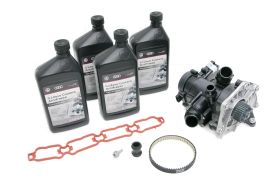
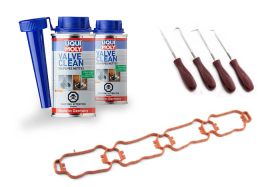
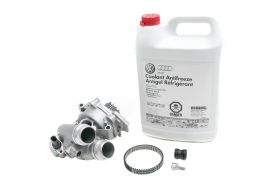
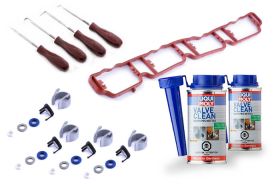
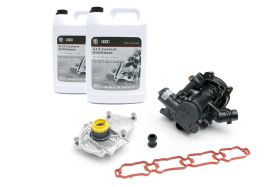










Comments